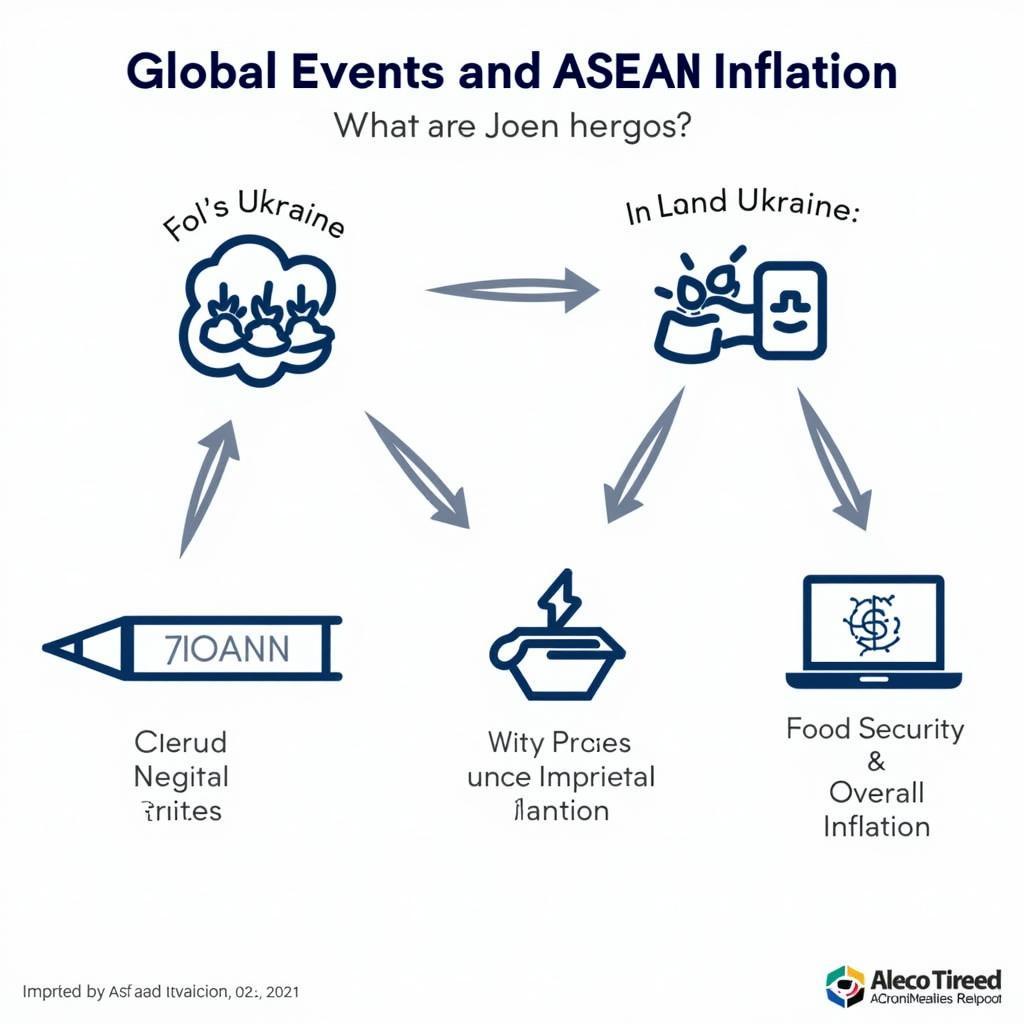Asean nations are grappling with rising inflation, with some reporting figures as high as 6.9%, sparking concerns about economic stability and social welfare. This article explores the factors driving this surge, its impact on the region, and potential solutions.
Understanding the 6.9% Inflation Figure: Is it Really the Highest in ASEAN?
While some ASEAN countries have seen inflation rates nearing 6.9%, it’s crucial to examine the context. Is this figure a peak, an average, or a projected rate? Understanding this requires looking at individual country data and comparing them against regional trends. Furthermore, the timing of these figures matters significantly. A 6.9% inflation rate in one quarter doesn’t necessarily translate to the highest annual rate.
Factors Fueling Inflation in ASEAN
Several factors contribute to the rising inflation in the ASEAN region. Global supply chain disruptions, exacerbated by geopolitical events and the ongoing pandemic recovery, have pushed up commodity prices. Increased energy costs are another significant driver, impacting transportation and production expenses across various sectors. Domestic policies, including monetary and fiscal measures, also play a role in shaping inflationary pressures within individual nations.
The Impact of Global Events
The interconnectedness of the global economy means that events far beyond ASEAN’s borders can significantly impact the region’s inflation. The war in Ukraine, for example, has led to soaring energy and food prices worldwide, impacting ASEAN nations reliant on imports.
 Global Impact on ASEAN Inflation
Global Impact on ASEAN Inflation
Domestic Policies and their Role
Each ASEAN nation employs different economic strategies which influence their inflation rate. Some countries might prioritize subsidies to cushion the impact on consumers, while others may focus on tightening monetary policy to control inflation.
The Socio-Economic Impact of High Inflation
High inflation rates erode purchasing power, impacting households’ ability to afford essential goods and services. This can lead to social unrest and exacerbate existing inequalities. For businesses, inflation introduces uncertainty, making investment decisions more challenging and potentially hindering economic growth.
Protecting Vulnerable Populations
Protecting vulnerable populations from the detrimental effects of high inflation is crucial. Social safety nets, targeted subsidies, and other forms of government assistance can help mitigate the impact on low-income households.
“Addressing the root causes of inflation requires a multi-faceted approach, including strengthening regional cooperation and diversifying supply chains,” says Dr. Anya Sharma, a leading economist specializing in Southeast Asian economies.
Mitigating Inflationary Pressures: Strategies for ASEAN
ASEAN nations can adopt various strategies to combat inflation. These include diversifying supply chains to reduce reliance on specific sources, strengthening regional cooperation to manage price volatility, and implementing targeted fiscal and monetary policies. Investing in renewable energy sources can help mitigate the impact of fluctuating global energy prices.
“Long-term solutions lie in investing in sustainable infrastructure and human capital,” adds Dr. Sharma, “This will build resilience against future economic shocks.”
Conclusion: Navigating the Inflationary Landscape in ASEAN
The 6.9% inflation rate, while concerning, doesn’t tell the full story. A deeper understanding of the specific circumstances within each ASEAN country is essential. By addressing the underlying causes, strengthening regional collaboration, and implementing sound economic policies, ASEAN nations can navigate the current inflationary landscape and build a more resilient economic future. Staying informed about the dynamic situation is crucial for making informed decisions and mitigating the impact of rising prices.
FAQ
- What is the average inflation rate across ASEAN?
- Which ASEAN country currently has the highest inflation rate?
- How does inflation affect businesses in the region?
- What measures are ASEAN governments taking to control inflation?
- What is the role of global factors in ASEAN’s inflation?
- How can individuals protect themselves from the impact of inflation?
- What are the long-term solutions for tackling inflation in ASEAN?
Need support? Contact us 24/7 at Phone Number: 0369020373, Email: aseanmediadirectory@gmail.com or visit our address: Thon Ngoc Lien, Hiep Hoa, Bac Giang, Vietnam. We have a dedicated customer support team ready to assist you.

